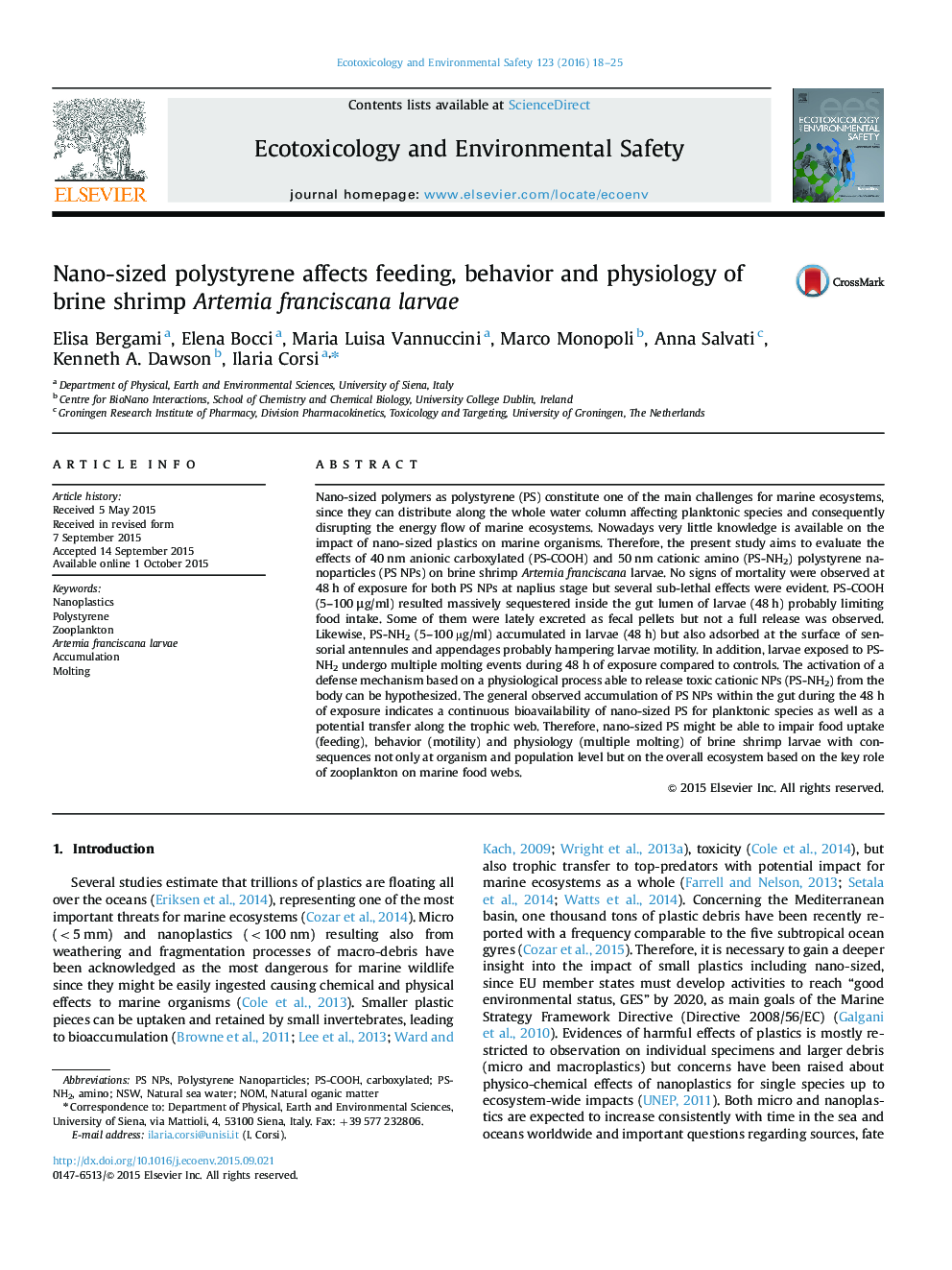| کد مقاله | کد نشریه | سال انتشار | مقاله انگلیسی | نسخه تمام متن |
|---|---|---|---|---|
| 4419494 | 1618940 | 2016 | 8 صفحه PDF | دانلود رایگان |

• PS NPs caused no mortality in brine shrimp larvae (48 h) but sub-lethal effects were observed.
• PS-COOH NPs massively sequestered inside the gut lumen probably limiting food intake.
• PS-NH2 were adsorbed at the surface of sensorial antennulae and appendages.
• Multiple molting events during 48 h compared to controls were observed upon exposure to PS-NH2.
Nano-sized polymers as polystyrene (PS) constitute one of the main challenges for marine ecosystems, since they can distribute along the whole water column affecting planktonic species and consequently disrupting the energy flow of marine ecosystems. Nowadays very little knowledge is available on the impact of nano-sized plastics on marine organisms. Therefore, the present study aims to evaluate the effects of 40 nm anionic carboxylated (PS-COOH) and 50 nm cationic amino (PS-NH2) polystyrene nanoparticles (PS NPs) on brine shrimp Artemia franciscana larvae. No signs of mortality were observed at 48 h of exposure for both PS NPs at naplius stage but several sub-lethal effects were evident. PS-COOH (5–100 μg/ml) resulted massively sequestered inside the gut lumen of larvae (48 h) probably limiting food intake. Some of them were lately excreted as fecal pellets but not a full release was observed. Likewise, PS-NH2 (5–100 µg/ml) accumulated in larvae (48 h) but also adsorbed at the surface of sensorial antennules and appendages probably hampering larvae motility. In addition, larvae exposed to PS-NH2 undergo multiple molting events during 48 h of exposure compared to controls. The activation of a defense mechanism based on a physiological process able to release toxic cationic NPs (PS-NH2) from the body can be hypothesized. The general observed accumulation of PS NPs within the gut during the 48 h of exposure indicates a continuous bioavailability of nano-sized PS for planktonic species as well as a potential transfer along the trophic web. Therefore, nano-sized PS might be able to impair food uptake (feeding), behavior (motility) and physiology (multiple molting) of brine shrimp larvae with consequences not only at organism and population level but on the overall ecosystem based on the key role of zooplankton on marine food webs.
Figure optionsDownload as PowerPoint slide
Journal: Ecotoxicology and Environmental Safety - Volume 123, January 2016, Pages 18–25